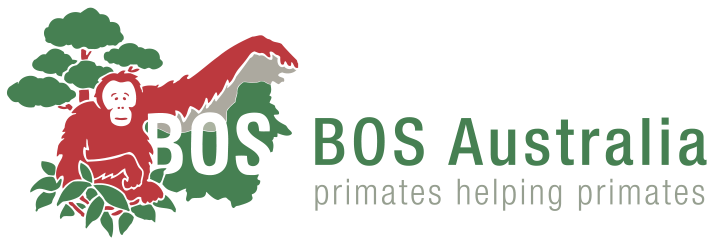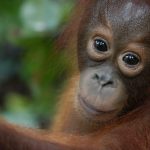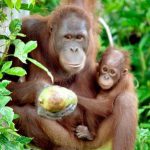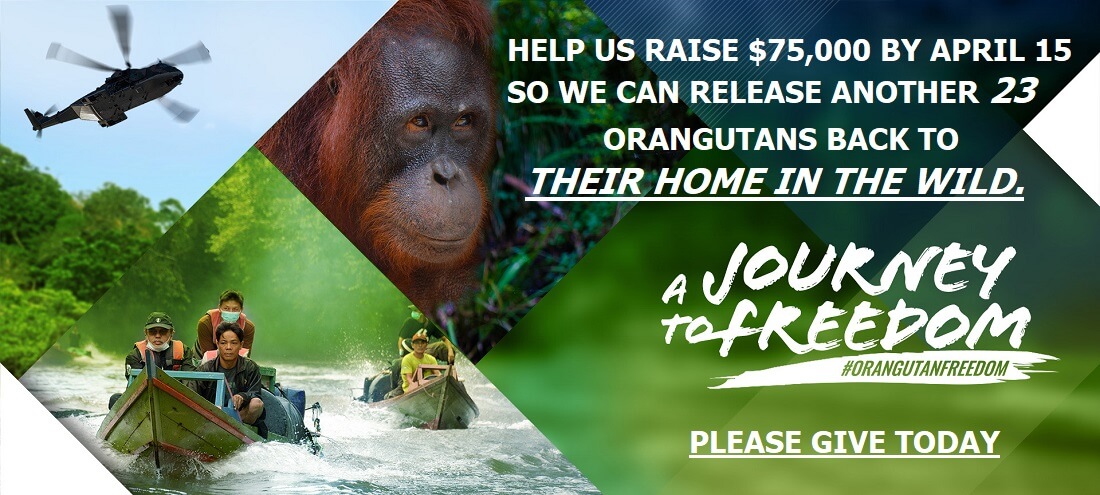CANDIDATES FOR THE 27th ORANGUTAN RELEASE FROM SAMBOJA LESTARI

The Ministry of Environment and Forestry of the Republic of Indonesia (KLHK), the Natural Resources Conservation Centre (BKSDA) of East Kalimantan, and the Borneo Orangutan Survival (BOS) Foundation, supported by Riau Andalan Pulp and Paper & PT. Bank Central Asia Tbk., will soon conduct the 27th orangutan release from the Samboja Lestari Rehabilitation Centre into the Kehje Sewen Forest. Here are the orangutan candidates up for release:
SITI
Siti, a female orangutan, has been rescued twice by the BOS Foundation. The first time was back in the 1990s, and her rehabilitation successfully ended with her release on November 2, 1997, in the Sungai Wain Protection Forest. Siti returned to Samboja Lestari Rehabilitation Centre after BKSDA Balikpapan got a complaint about an orangutan entering a work camp.
The team immediately rescued Siti and brought her to the Samboja Lestari Rehabilitation Centre for further assessment. Upon her arrival, Siti was placed in Socialisation Complex A for quarantine and has remained there awaiting her chance to be released back into the wild.
MORI
Mori, who is now 15 years old, was initially captured and turned over to the Kutai National Park by residents of Sanggata. Being only 2-3 years old and without a mother at the time, she needed to undergo rehabilitation, and on February 24, 2012, she was transferred to BOS Foundation’s Samboja Lestari Rehabilitation Centre. Despite her tragic past, Mori has grown into an independent orangutan who dislikes being around humans.
The BOS team originally released Mori in 2019 into the Kehje Sewen Forest. However, when her physical condition deteriorated, they had no choice but to return her to the Samboja Lestari Rehabilitation Centre for treatment of a disease called melioidosis. Now, this young orangutan is ready to be released back into the wild and enjoy her freedom once again.
RENO
On October 1, 1997, a one-year-old orangutan was rescued in the Sebulu area and started his rehabilitation journey with the BOS Foundation. He was named Reno and attended a special forest school until he was four years old, after which the BOS team transferred him to the Wanariset Socialisation Cage. The sudden move was due to his Hepatitis B diagnosis, which required quarantine to protect other orangutans. In 2010, new research revealed a strain of Hepatitis B in orangutans, which is harmless and carries no risk of transmission to other orangutans. This welcome news meant that Reno could finally restart his rehabilitation journey after a decade’s pause.
Today, 27-year-old Reno is known as an aloof orangutan who has no desire to be close to humans. He tends to be indifferent to the actions of the BOS Foundation technicians and will not come close, even if called by them. He is certainly ready to take even more distance from humans in the vast expanse of the Kehje Sewen Forest.
ULI
Uli initially underwent rehabilitation at the BOS Foundation’s Wanariset Centre in the 1990s and was successfully released on September 9, 1999. However, in June of 2021, videos of an orangutan near the Loesan Village went viral, prompting a quick rescue and transfer to the Samboja Lestari Rehabilitation Centre. Thanks to his unique microchip number, the team quickly identified the male orangutan as Uli. Having already survived for over 20 years in the wild, Uli is ready to be released back into his natural home again.








